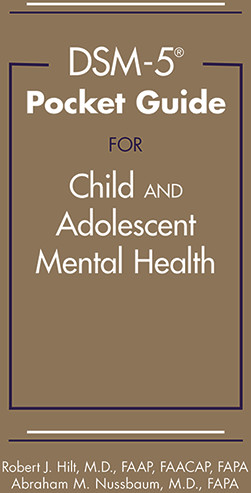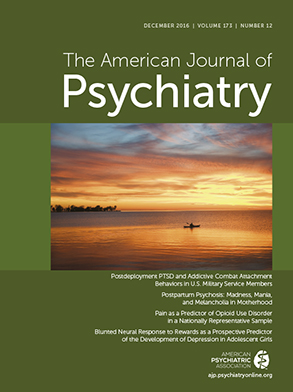The release of DSM-5 reminds us that many etiological factors influence psychiatric presentation, requiring integration of clinical symptoms, cultures, families, ethnicity, gender, sexual orientation, economics, and communities. For children and adolescents, developmental and parental factors must also be considered. DSM-5’s introduction of new categories for youths and reclassification of others might be helpful. DSM-5 fails, however, to address the fundamental challenges in using existing diagnostic classifications to categorize problems of youth. Hilt and Nussbaum’s DSM-5® Pocket Guide for Child and Adolescent Mental Health is an attempt to translate the essential diagnostic components of DSM-5 into an efficient and practical tool for clinicians.
This guide is not a replacement for DSM-5; rather, it is an experience-driven clinical guide for practitioners of varied medical disciplines and levels of experience. The authors’ pragmatic, evidence-driven, time-sensitive recommendations are likely to increase the confidence of all those who most commonly encounter children and families experiencing mental health concerns, but perhaps in particular of those who, at the start of their career, have to manage patients within the limited time of their office visits.
In the introductory section, the authors first explain that their approach is motivated by their own experiences as busy providers, and they then go on to sketch a context all too familiar to all of us who care for children. We have all walked into complex psychosocial situations with a child and family, with only 30 minutes on our schedules. The pressure can be high and will be further intensified in the context of limited mental health experience. For these types of encounters, Hilt and Nussbaum’s guide gives tools to effectively and efficiently manage time and patient. The authors provide a concise overview of common clinical concerns and discuss the use of screening strategies, including brief, freely available standardized tools. The authors further describe interventions that can be delivered in the office by primary care practitioners and algorithms for determining when higher levels of care are needed. A major strength of this section is the guidance for practitioners in establishing the therapeutic alliance with children. Also very helpful are the suggested questions, phrases, and context to probe sensitive issues, such as suicidal thinking, self-injury, abuse, and sexuality. These issues are sometimes awkward for primary care practitioners, often resulting in a failure to ask important questions. Many concise and useful tables reinforce the information.
The second and third sections of the book focus on DSM-5 criteria and clinical guidance. The mental status examination is nicely summarized, and the brief version of DSM-5, focused on core symptoms and distinguishing features of different psychiatric disorders, is likely to aid in the diagnostic process. The authors’ stepwise differential diagnosis algorithm helps practitioners arrive at a diagnosis, document when they cannot arrive at a diagnosis, and make referrals to experts for complex concerns when required. The authors further encourage the use of rating scales that use symptom measures from DSM-5 and diagnostic and follow-up tools to assess treatment effects, again making such tools freely available. Their discussion about the relevance of cultural assessment is excellent.
In the clinical guidance section, the authors carefully explain treatment planning, thereby highlighting useful crisis intervention strategies. The authors remind us that treatment planning has dynamic and family-driven goals and is a process to be viewed as “a recipe to change a patient’s life” (p. 249). The authors urge us to use our treatment plans and problem lists as shared plans with our patients, to develop truly measurable goals, and to set the bar high enough for real improvement but not so high that we demoralize our patients. Our treatment plans should be measurable, evidence informed, and manageable by providers and families. These important concepts for patient care are, unfortunately, all too often reduced to goals developed by payors and regulatory agencies and the completion of forms.
The authors end their book by reminding clinicians about the many unknowns in mental health care and by urging us to look for opportunities in our daily work to improve care for children and families affected by mental health conditions.
I was concerned that this might be just another “how to” book that oversimplified children’s mental health treatment. However, I was pleasantly surprised. As an experienced clinician, I learned new ways of thinking about working in integrated care models and partnering with primary care providers to expand mental health care. The book also stimulated my own thinking about patients who do not need to be seen in subspecialty care.
Increasingly, nonpsychiatrists are expected to provide care for mental health patients either in collaboration with mental health professionals in the community, in collaborative care models, or alone without mental health support. This book may just be what they need to succeed.
I would recommend this book for trainees, primary care providers, and mental health professionals working in medical settings. As we move toward integrated care and affordable care, a reference like this is essential.


